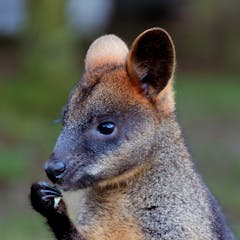
Articles on Ecology
Displaying 1 - 20 of 413 articles

Sometimes it seems the night is just buzzing with insects. But are there really more insects out at night? We analysed all the evidence on insect activity across the day–night cycle to find out.

The last time that these two groups of cicadas emerged from underground together, Thomas Jefferson was president.

My passion for earthworms and ecology led me to continuing Darwin’s experiments in his own ‘back garden’

Rather than just a small change here or there, taking real action on climate change and biodiversity requires a fundamental, system-wide reorganisation.

Agroecology could be an effective way to address food insecurity and respond to the climate crisis. However, significant hurdles remain.

Rock dust is only part of the story of soil. Living creatures, many of them too tiny to see, keep that soil healthy for growing everything from food to forests.

Our plant species are pickier about their preferred temperature range than you would expect. That means many will have to move south, seeking cooler climes.

When Frank Herbert sat down in 1963 to start writing ‘Dune,’ he wasn’t thinking about how to leave Earth behind. He was thinking about how to save it.

Solar development isn’t always good for the land, but pairing it with agriculture can produce multiple benefits.

The state’s largest wildfire on record tore across the heart of Texas cattle country, and more days of strong winds were forecast. A rangeland ecologist explains why the flames spread so fast.

Australia could still take action in the fight against Varroa that wasn’t possible elsewhere. But to do so, we need to fill urgent gaps in bee research.

On a small, remote island in the Pacific Ocean, an unlikely predator feasts on the world’s largest albatross colony. Researchers are trying to figure out how to stop these murderous mice.

Michael Varnum explains new research on the role ecological factors play in the differences between cultures. Listen to The Conversation Weekly podcast.

Maths plays a crucial role in new research which finds that bats “leapfrog” their way home at night.

Each year, hungry plant-eating animals do billions of dollars of damage to valuable plants. We need prevention methods that don’t involve killing them.

A survey of Miami-Dade residents found bipartisan support for protecting Biscayne Bay − though most locals were not aware of the extent of its decline in recent years.

Researchers have made a fascinating observation: a polar bear used a diving hunting technique, never before reported, to capture large moulting snow geese.

There are so many fish in the ocean that if you took them out, important habitats and food sources for many creatures would be lost.

A herd of javelinas wrecked a pristine golf course. Is this rewilding in action?

Feral hogs are one of the most destructive invasive species in North America, harming land, crops and wildlife.
